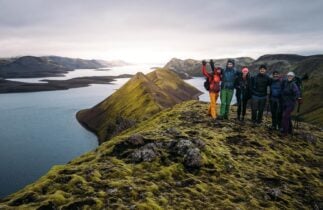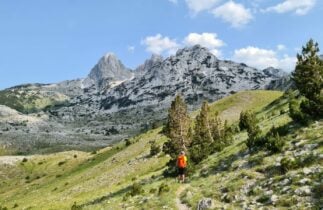The 5 Best Hikes in (and Around) Grand Teton National Park
Table of Contents
My husband Jeff and I have been running Teton Backcountry Guides for over 20 years. We can’t imagine a better way to spend our time than being outdoors and right here in the Tetons.
Weather permitting, we pretty much spend every day outside, be it skiing, hiking or biking. In the summer we organize day hikes and backpacking trips, while in the winter our hands are full with guided yurt trips in the backcountry. We feel incredibly blessed to live in an area such as this—with the wilderness, national forests and parks so easily accessible—and equally excited to be able to share our favorite hikes with you!
Read on to find out about five of the best hikes in and around Grand Teton National Park—or as I refer to it, my backyard.
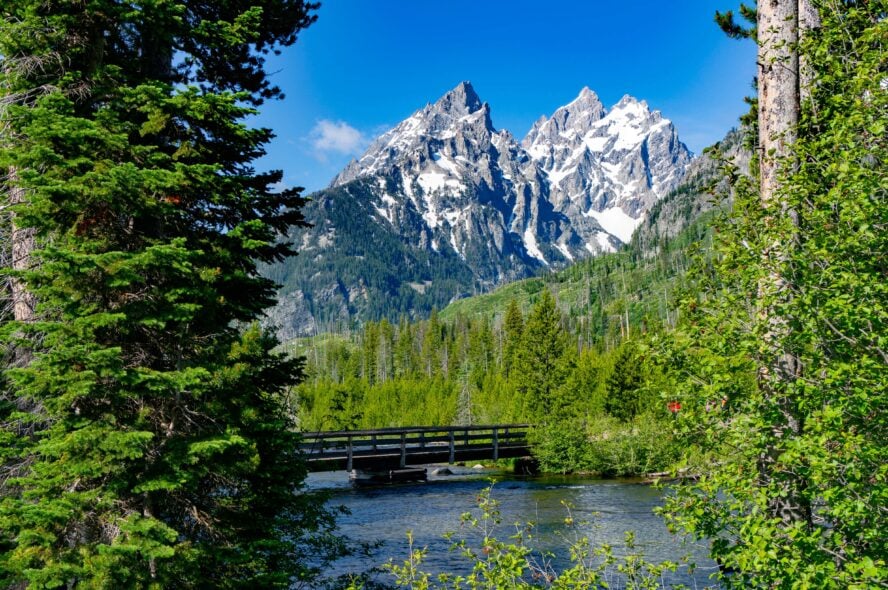
What Makes Grand Teton So Special
Part of the Greater Yellowstone Ecosystem, this is the largest intact ecosystem in the Lower 48 and one of the biggest in the world. All of the same animals still inhabit the territory just as they did long before Lewis and Clarke’s expedition brought them out West.
Today, it’s harder to preserve such large swaths of land that provide critical habitat to predators like the grizzly bear, which is why, thankfully, a lot of the land here is federally protected. People are often surprised to see exactly how much wilderness there is in the Tetons, especially near Jackson Hole. Only a small percentage of the land is actually public, most of it being protected forest, wilderness or park land.
Why I Love Hiking Grand Teton National Park’s Western Slope
Even after all these years, I still think that Grand Teton National Park, particularly the western slope, hosts some of the best hikes in the Yellowstone area. The geological makeup yields a rich trove of minerals from which the area’s famous beautiful wildflowers are born. Its flower-strewn hills are like a scene from The Sound of Music: never-ending waves of pink, white and blue with scattered bursts of red gently swaying with the mountain breeze.
The varied terrain coupled with the great views makes this a hiker’s dream.
5 Best Hikes in and around Grand Teton National Park
To help you navigate the many options, I’ve highlighted some of the best hikes in and around Grand Teton National Park.
Easy Hikes in Grand Teton National Park
- Taggart Lake Loop – 3 miles, best for beginner hikers
Intermediate Hikes in Grand Teton National Park
- Amphitheater Lake Trail – 5 miles, best for more experienced hikers
- Goodwin Lake Trail – 6 miles, best hidden gem trail
Strenuous Hikes in Grand Teton National Park
- Paintbrush Canyon and Cascade Canyon Loop – 20 miles, best for portrait-worthy views
- Table Mountain Trail – 11 miles, best for epic viewpoints
Let’s explore the best hikes Grand Teton has to offer!
1. Taggart Lake Loop
If you’re looking for a great easy trail to take your family out for a beautiful day outdoors, then Taggart Lake is my top recommendation. This is a very popular choice among those who are in the area with not a lot of time on their hands. Since there are no tough segments here to challenge hikers, but all the scenic goodness the Tetons have to offer, Taggart Lake is what I consider to be the perfect introduction to the area.
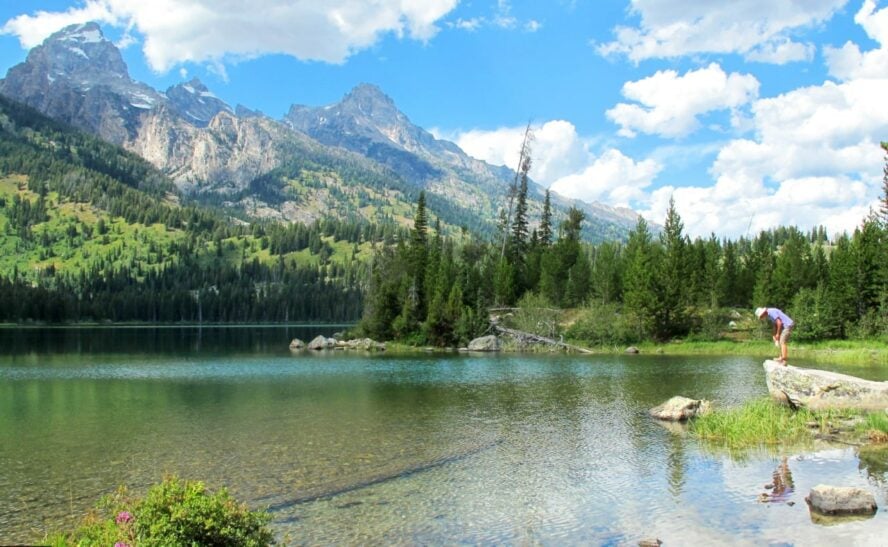
A Sweet and Short Trip for the Whole Family
The well-maintained trail to Taggart Lake immediately starts off with stunning views of Grand Teton, the highest mountain in the Teton Range. As you make your way to Taggart Lake, you’ll be passing through mixed forests of spruce and pine, as well as longer stretches of aspen groves, before reaching a wide clearing — the site of the 1985 Beaver Creek Fire, which charred over a thousand acres of land.
As a result, you can see a lot of the local wildlife running around under the watchful eye of the mountains, which is one of the reasons I love this hike. After just over a mile into your hike, you arrive at the Bradley Lake Junction. Take the left path for Taggart Lake and some more amazing mountain scenery until you reach your destination. Since this is not a difficult hike, you might also want to visit nearby Bradley Lake to put in some extra miles and enjoy the views longer.
The Taggart Lake Loop is 3.3 miles (5.3 km) long and if you decide to add Bradley Lake into the mix, which I suggest if you have the time, it adds up to 5.5 miles (8,9 km). To visit both lakes, it is recommended that after reaching the Bradley Lake Junction, you take the right path and visit Bradley Lake first. After doing so, you return to the junction and proceed to Taggart Lake. When you’re done soaking up the stunning scenery, you finish your loop by taking the Taggart Lake Trail back to the starting trailhead.
Simple but beautiful, the Taggart Lake Trail is considered by many, including me, to be the perfect introduction to the area.


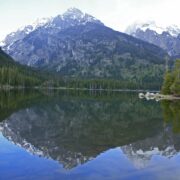
1. Taggart Lake Loop - Good to Know
Very easy, suitable even for children
Mostly flat stretches with little elevation gain
May through October
1-2 hours
Around 3 miles (5 km); 300 feet (90 m)
Taking a short detour to Bradley Lake
Wild moose and mama bears can be spotted on the trail so be wildlife safe
2. Amphitheater Lake Trail
In my opinion, one of the best day hikes in Grand Teton National Park has to be the Amphitheater Lake Trail. Unlike Taggart, this is a strenuous trail suitable for more experienced hikers. Situated under the charmingly named Disappointment Peak (which is anything but), the Amphitheater and Surprise Lakes are a joy to behold.

Surprise and Amphitheater Lakes Offer Up the Rewards of Hiking
Starting from the Lupine Meadows trailhead, the initially flat trail soon ascends into dense forest that restricts any sight of your surroundings. There’s a lot of wildlife in the area and it’s not uncommon to see black bears along the route, so the park service strongly recommends hiking in groups, making a lot of noise and carrying bear spray.
After a while you’ll reach a junction where an opening in the trees will offer an incredible view of Bradley and Taggart Lakes. Further on the trail will switch back several times, giving you a glance of Jackson Hole and the famous Sheep Mountain in the distance, one of my favorite sites on this trail.
As the trail climbs further with even more switchbacks, you’ll turn right at an intersection, after which Disappointment Peak will rise in front of you. The 11,623 ft (3,543 m) peak was given its name by a group of Colorado climbers who unsuccessfully attempted to climb the Grand in 1925. Beneath its slopes lie two glacial lakes — the smaller Surprise Lake and, further on, its big sister, Amphitheater Lake. When I’m there, I like to choose one of the many rocks to sit on and enjoy this subalpine gem and its beautiful backdrop.
Even More Greatness Just a Small Detour Away
From the trailhead to the lakes, it’s roughly a 5-mile (8 km) hike, with plenty to see during the ascent and a spectacular payoff at the end that makes it all worth it. But let’s imagine for a second that you’re not interested in the lakes, or you’ve already seen them and are looking for something else to do while you’re there.
Instead of turning right on the junction to Amphitheater Lake, take the left path to Garnet Canyon and check out why climbers flock there year after year. The walls of Middle Teton rising majestically into the blue sky, Irene’s Arête towering above you — I mean, it’s just spectacular. Even if you’re not into climbing, it’s definitely worth seeing.
The payoff at the end of this challenging trail is immense, because the views Amphitheater Lake offers are absolutely breathtaking.


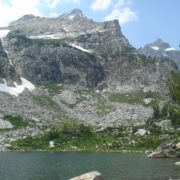
2. Amphitheater Lake Trail - Good to Know
Intermediate to advanced level required
Lots of steep switchbacks and narrow sections
May through September
6-8 hours
5 miles (8 km); Around 3000 feet (900 m)
Great opportunities for bird watching and fishing
Garnet Canyon’s rock climbs are great if you don’t have a full day’s time or a favorable weather forecast
3. Paintbrush Canyon and Cascade Canyon Loop
What I love about Grand Teton National park is that canyons provide the setting for many of the park’s incredibly scenic hiking trails, and the celebrated Paintbrush Canyon Loop Trail might just be the most epic of them all. Make no mistake, this is one pretty tough hike, no matter how fit you are. So tough, in fact, that some folks opt for backpacking it in two or even three days. Others eager to test themselves undertake this 20-mile (32 km) journey in a single day.
Whatever you choose, you can be sure that you’re in for an unforgettable experience. Jenny Lake, Holly Lake, Inspiration Point, Lake Solitude, Cascade Canyon, Paintbrush Canyon — the list of spots you’ll visit on this trail reads like a “best of” compilation of the Tetons in and of itself.
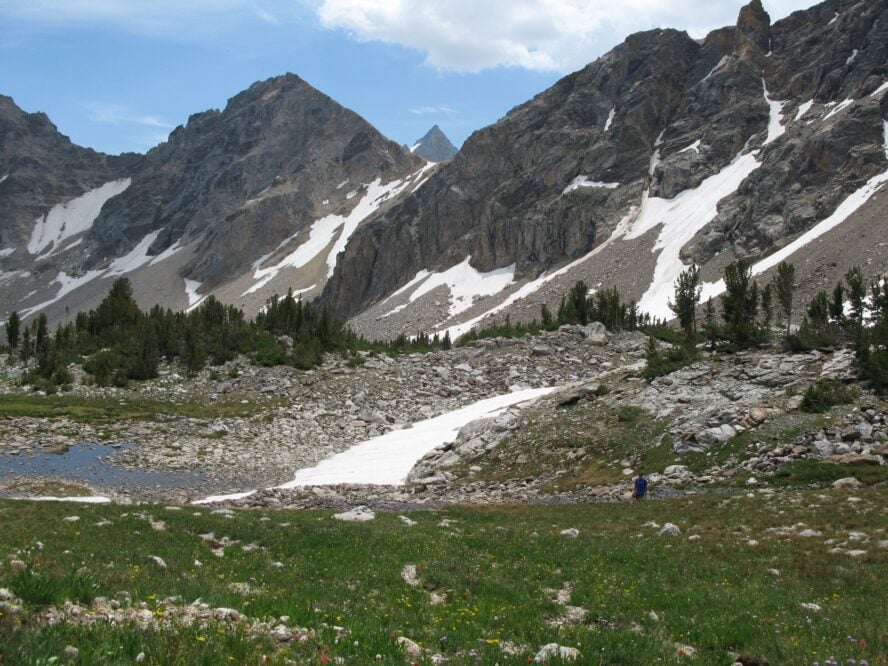
Consider Hiking This Loop Trail Counterclockwise
Since this is a loop trail, it can be hiked both ways. If you’re worried about the difficulty, I’d suggest hiking counterclockwise because that way you’ll get most of the climbing done early in the day. You’ll start at the String Lake Trailhead going towards Jenny Lake, where you’ll have great views of the Gros Ventre mountains to the east.
As you make your way up Paintbrush Canyon, you’ll be able to enjoy its beautiful wildflowers and foliage, especially in the fall, when the trees are flush with colorful leaves. You’ll definitely want to have your camera with you, because the higher you climb, the more spectacular the views become. After passing Holly Lake, the elevation starts to take its toll.
Vegetation gives way to rock and the zig-zagging trail becomes steeper as you near the 10,700-ft (3261 m) summit. Once there, take in the panorama with all your senses, but watch out for the strong winds!
Hiking to Cascade Canyon: One of My Favorite Places in the Park
Then it’s time for the descent. Carefully proceed down towards the remote Lake Solitude nestled up in the heart of the Tetons and rest up a bit before moving on to Cascade Canyon, one of my absolute favorite places in the park. If you’re lucky enough, you might see some moose near the streams or the odd fox going about its business.
The last stretch towards String Lake is not going to be easy. Be sure to drink plenty of water and take quick breaks. When you’re coming back down the steep trails on tired legs, it can really push your leg muscles to its limits. I personally prefer going clockwise, up Cascade and down Paintbrush Canyon, being surrounded by the towering rock walls of Mount Woodring, Rockchuck Peak or Mount Saint John as I near the finish line. The entire loop takes 8 to 12 hours, so be sure that you’re well prepared before deciding to hike it in a single day.
The list of spots you'll visit on the Paintbrush Canyon Trail reads like a "best of" compilation of the Tetons. There are some of my favorite highlights of the whole park on this route.
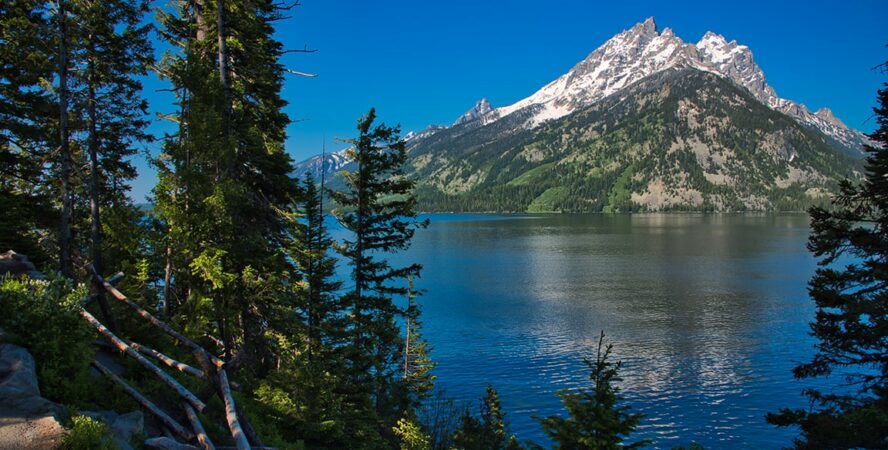
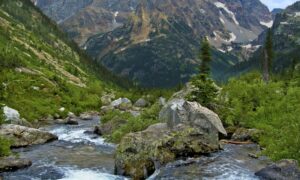

3. Paintbrush Canyon and Cascade Canyon Loop - Good to Know
Very strenuous; requires a high level of experience and fitness
Best from May through September
Late summer to early fall
8-12 hours
20 miles (32 km); 4000 feet (1200 m)
The wildflower fields, beautiful canopies in the fall
You can take a scenic boat ride across Jenny Lake
4. Table Mountain Trail
The next best thing to climbing the Grand Teton is seeing it from Table Mountain, situated on the border of Grand Teton National Park and the Jedediah Smith Wilderness. It’s so close that you can make out the climbers on the other side even without binoculars.
Here’s a fun fact: one of the first ever photographs of the Tetons was actually taken on Table Mountain in the 19th century. The beautiful landscapes shot during that expedition would influence the decision to protect Yellowstone as our first national park.
Considering the popularity of the previously suggested trails, the Table Mountain Trail almost feels like a hidden gem in comparison. You won’t find as many people here like you would on Paintbrush, but not for lack of sights and thrills.

A Strenuous but Worthwhile Workout
The first thing you should know about Table Mountain is that it wastes no time gaining elevation. The trail may be the best high-altitude hike in Grand Teton National park, it’s no pushover. This 11,100-feet (3385 m) giant promises another very exciting and strenuous hike in the Teton area with lots of great vantage points to soak up the nature around you.
There are two ways to get to the summit — Face Trail and Huckleberry Trail — and the two of them combined form the 11-mile (17 km) Table Mountain Loop Trail. No matter which way you go, after finishing the loop you’ll definitely notice that it feels much longer than it really is, owing to the 4000 ft (1220 m) elevation gain.
The Easier Option — Start With Huckleberry
Taking Huckleberry first is considered to be the easier option as you gain elevation more gradually. If you decide on going up the Face Trail, you’ll be greeted by a sign warning you that the route ahead is not maintained, after which the trail will steeply head upwards.
However, I don’t want you to think that Table Mountain is just one grueling stretch after another. In fact, the entire loop is filled with lookouts offering amazing photo-worthy views, while the wildflower fields will have your senses singing with joy. Standing atop the summit, I’m always overwhelmed by the glory of the Tetons rising majestically into the sky.
The lighting is best in the afternoon, but at the same time you run the risk of getting caught in of Table Mountain’s frequent thunderstorms. Pay great attention to the weather and consider departing early in the morning so that you’re off the mountain by the time the storms come down.
I’m of the opinion that the next best thing to climbing the Grand Teton is seeing it from Table Mountain.
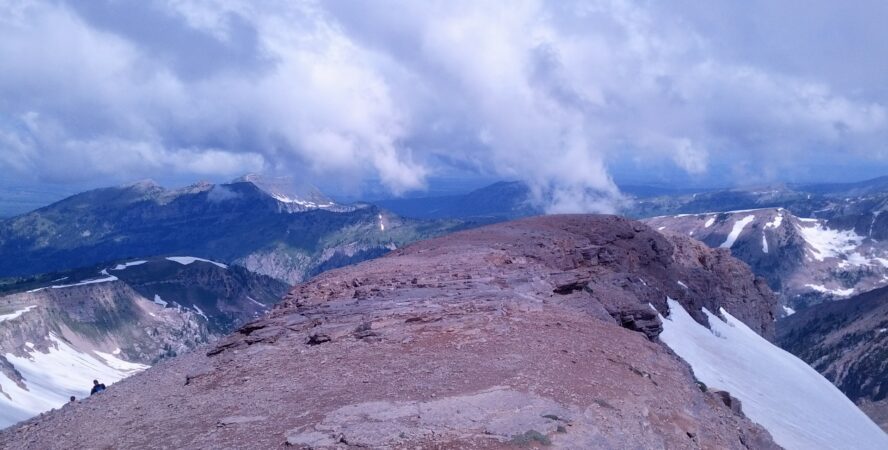
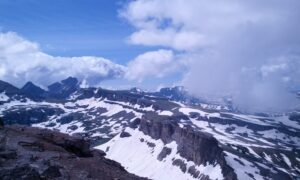
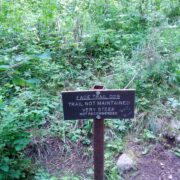
4. Table Mountain Trail - Good to Know
Quite strenuous; requires a high level of experience and fitness
Very steep trail; watch out for loose rock
July to September
2-10 hours, depending on your fitness and pace
Around 11 miles (17 km); 4000 ft (1200 m)
Taking awesome pictures on the summit
Going down the steep Face Trail can be dangerous so be cautious prepared by hiking with a first aid kit and other essential items
5. Goodwin Lake Trail
While we’re on the topic of the best hikes in and outside Grand Teton National Park, Goodwin Lake Trail is another one of my absolute favorites. Situated on the eastern side of the valley, in the Gros Ventre Wilderness, lies the lovely Goodwin Lake.
When I’m in the mood for a nice picnic in the mountains or maybe even a refreshing swim in the crystal clear water of an alpine lake, this intermediate crowd-free hike has me covered. Bring your family, friends and even your pets. Yes, good news for all you dog lovers out there — you can bring your canine pals to both Table Mountain and Goodwin Lake.
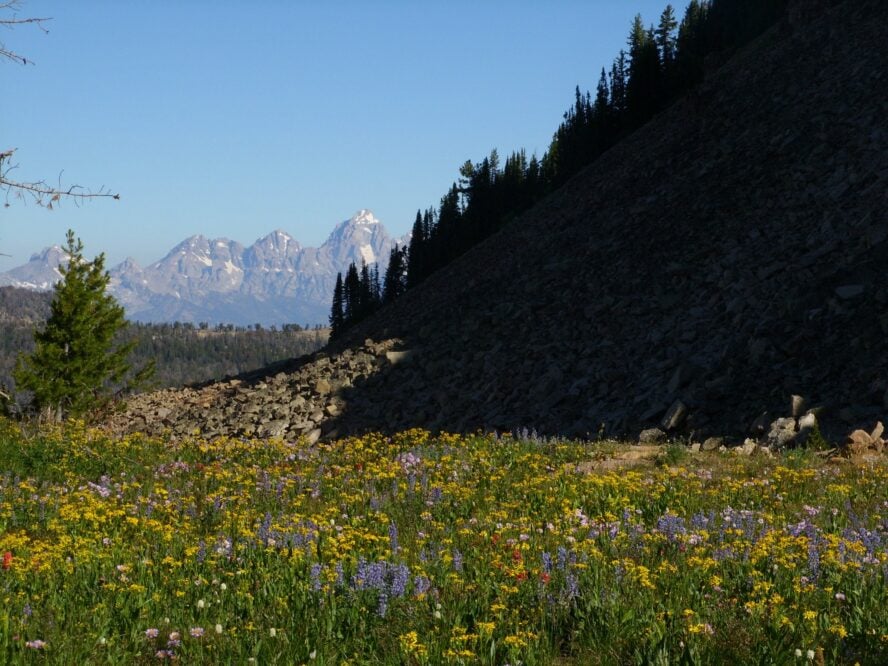
The Plentiful Shade Will Provide Comfort Along the Way
To get to the starting trailhead of this 6-mile (10 km) loop trail, first you’ll need to drive to an elevation of around 8000 ft (2400 m), going past the National Elk Refuge and up several miles of bumpy dirt road. Just take it slow and be wary of potholes.
Once you finally reach the trailhead, you can leave your car and start your ascent through the pine forest. It’s going to be steep at first, but before long the initial incline will start leveling out, introducing open meadows with views across Jackson Hole where the Tetons rule the valley.
The trail has plenty of shaded portions where you can escape the heat, but one thing you can’t escape are insects. It’s good to bring bug repellent for protection along with the obligatory bear spray. When you finally reach the lake, take a seat on one of the rocks scattered around it and enjoy the wonderful scenery.
The Goodwin Lake Trail is a perfect example of a gem hidden off the beaten path. One of the reasons I love it is because it gives a completely different view of the Tetons. You can see the whole range as it rises straight up out of the valley floor due to its unique geological features. The interesting wildlife and subalpine scenery make the experience even more special. And nothing can beat a good swim on a hot summer day!
Goodwin Lake is the perfect example of a gem hidden off the beaten path.

5. Goodwin Lake Trail - Good to Know
Intermediate
Occasionally rocky, steadily inclines towards the lake
June to September
1-3 hours
6 miles (10 km); around 8000 ft (2400 m)
The beautiful subalpine scenery and crystal clear water
The drive up to the trailhead may require 4-wheel drive
Essential Things to Know About Hiking in Grand Teton National Park
If you’re feeling inspired to book your trip to the Tetons, here’s a few tips to get you started!
When is the Hiking Season? When Should I Come?
Aim to hit the trails between May and late September. May sees Grand Teton shedding its winter coat, and while you’ll still find some mud here and there, most of the trails will be clear of snow. Plus, hiking in late Spring comes with the added benefit of avoiding the summer crowds.
When summer comes, all the amenities are open, the wildlife is on full display, and the sunny weather guarantees pleasant hikes in Grand Teton National Park. However, the trails are usually pretty crowded, and you’ll be hard-pressed to find an open campsite.
Winter weather often arrives as early as October, and the campgrounds, visitor centers, and lodges start shutting down for next season. But, that also opens up plenty of opportunities—why not try ski mountaineering in Grand Teton National Park?
How do I get to Grand Teton National Park? Where do I stay?
If you’re flying in from outside the U.S., Salt Lake City International Airport is your best bet. From there, you’re a 5-6 hour bus or rental car drive from the Park. For domestic flights, Jackson Airport in Jackson, WY, is a half-hour drive away from Grand Teton. The START Bus Town Shuttle offers free transportation from Jackson to the Park roughly every 30 minutes.
Grand Teton has plenty of lodge and cabin accommodations to spend a few nights in. Rustic lodges such as Grand Teton Climber’s Ranch, Colter Bay Cabins, and Headwaters are cozy and well-equipped, with running water, electricity, and plenty of good restaurants. Many of these lodges also offer horseback riding, fishing, and other fun off-the-trail activities. And if you’re looking for more standard accommodations, there’s no shortage of hotels in Jackson, WY.
How many entrances are there? Are there any entrance fees?
Grand Teton National Park has three entrances: Moose Entrance, commonly accessed from Jackson, WY, Granite Canyon Entrance, usually used by visitors coming from Utah or Idaho, and the Moran entrance, with easy access to Jackson Lake and the northern sections of the Park.
Upon entrance to Grand Teton National Park, you’re required to pay a 7-day entrance permit. The fee for private vehicles is $35, motorcycle owners pay $30, while individual hikers that are 16 and older are charged $20 per person.
There are no hiking permits for Grand Teton, but if you’re planning on camping there, you need to get a backcountry permit. Reserving your spot will set you back $45, while a first-come, first-serve permit on the day of the trip costs $35. And if you happen to really fall in love with the Tetons, there’s an Annual Pass allowing you year-round access to the Park for only $70.
How many days do I need in Grand Teton National Park?
If you’re making a hiking itinerary for your Grand Teton outing, plan to spend at least three days in the Park. As any Grand Teton hiking map would tell you, the options here are endless. There’s over 100 hiking and backpacking trails in Grand Teton National Park and its surrounding area, meaning there’s several months of hiking to be done here.
For example, you could start your trip with a pleasant tour of Taggart Lake, followed by a day-long expedition to the Park’s outskirts on the Goodwin Lake Trail. On day 3, wrap up your adventure with a challenging ascent to the top of Table Mountain, basking in the epic views of the whole Teton Range!
What are some other things to do in Grand Teton National Park?
While the hikes take the cake, there’s plenty of other outdoor adventures to be had in Grand Teton. If you’re looking to get acquainted with the wildlife, you could go horseback riding or on a wildlife safari. If you want to explore the Park’s crystal-clear waters, rafting, kayaking, rafting, and fishing are all options here. And if you’re in an especially adventurous mood, why not climb one of the Grand Tetons’ panoramic peaks?
Grand Teton National Park’s lodges also house some great restaurants. From fresh fish to local game, you’re sure to enjoy the cuisine there. Jenny Jake Lodge Dining Room, Trapper Grill, and Dornan’s Pizza Pasta Company are all great options for a delicious meal in the wilderness.
Will I be safe hiking in Grand Teton National Park?
While hiking in Grand Teton isn’t much more dangerous than hiking anywhere else, you’ll have to make some precautions. First of all, make sure you bring adequate equipment, a big supply of water (crucial for summertime hikes) and a quality map. Also, hike in pairs or groups and always stick to established trails. Soil erosion is a common problem here. Finally, make sure to check the weather forecast before venturing out.
When it comes to wildlife, grizzly encounters are always a possibility. If you’re traveling through bear territory make sure you keep your distance, make as much noise as possible, and definitely bring some bear spray for added protection. If you’re still worried, Grand Teton National Park’s visitor centers can provide more detailed safety information for your hike.
Do I need a hiking guide for Grand Teton National Park?
When hiking in unfamiliar territory, going with a guide is always your best bet. Most hiking guides in Grand Teton National Park are very familiar with the terrain, and will help you pick appropriate trails for your fitness and experience level. Also, they’re well-versed in the dangers of the area, and will do their best to keep you safe and satisfied in the wilderness!




